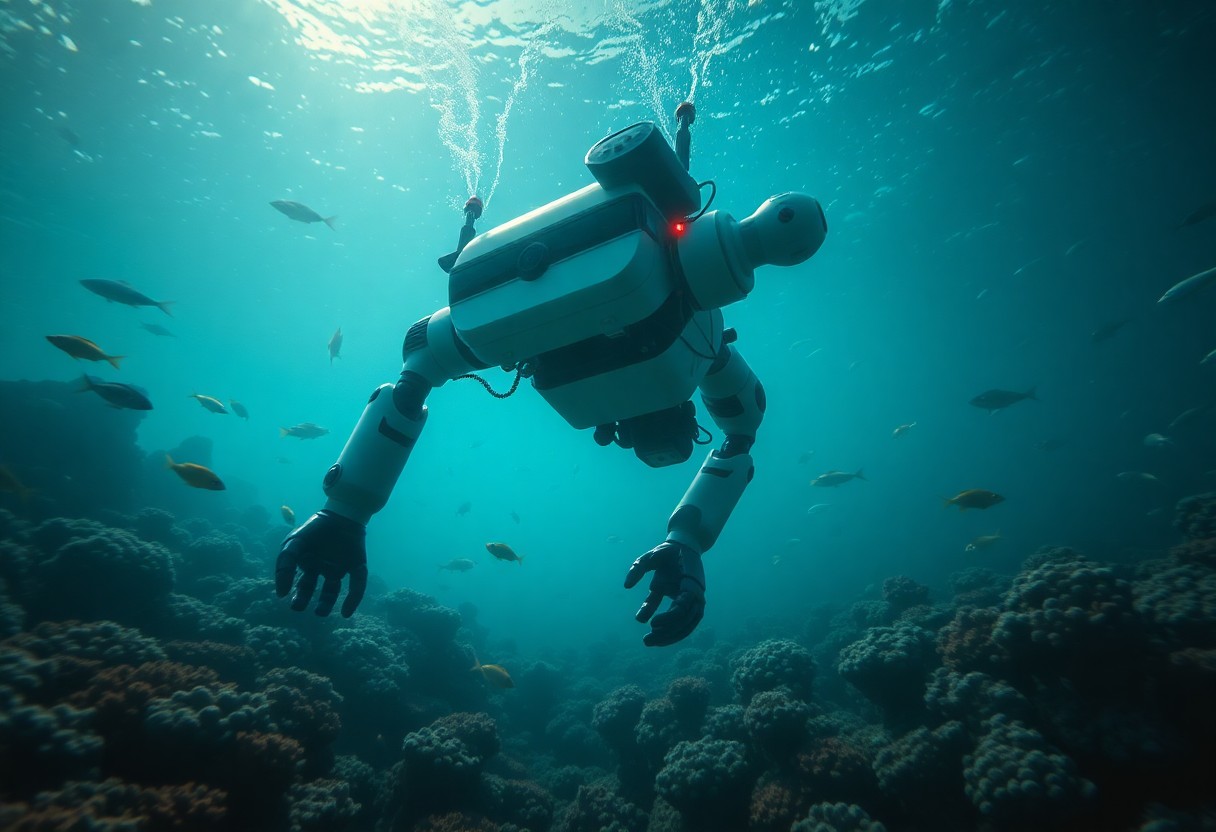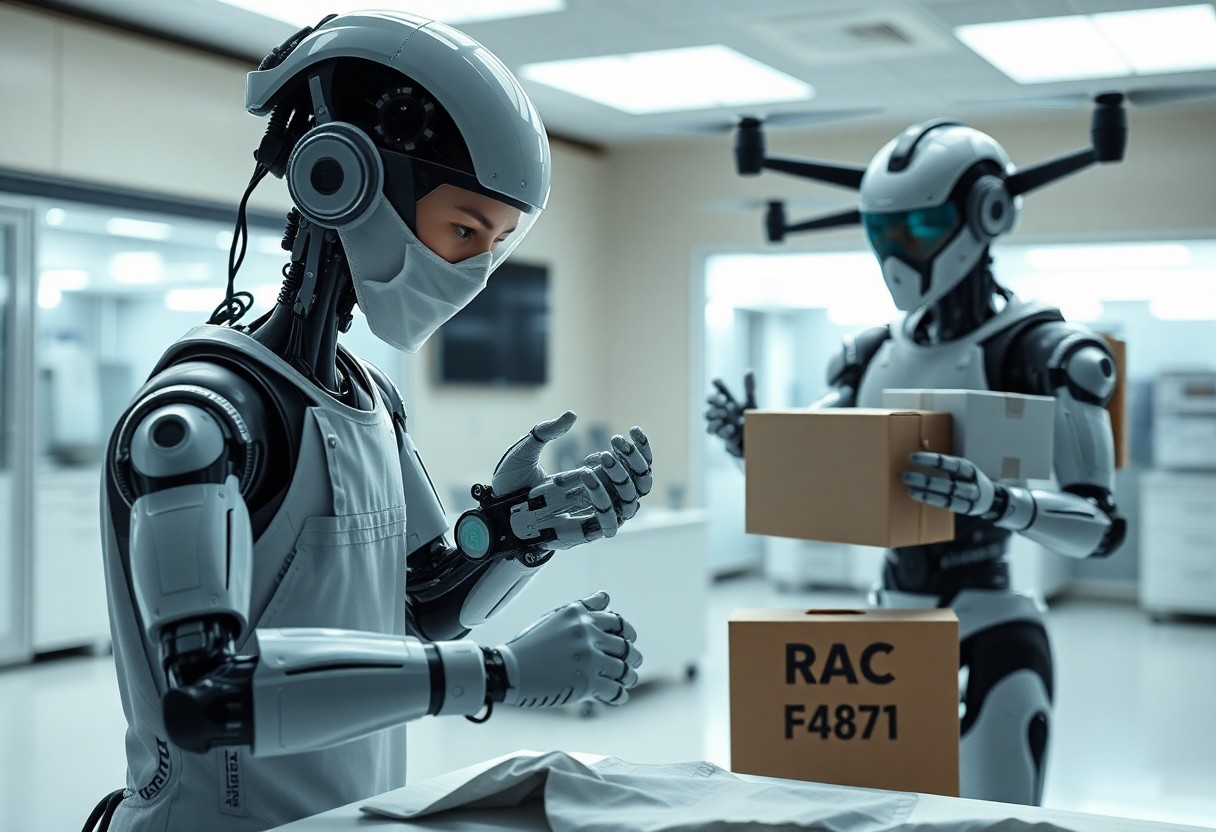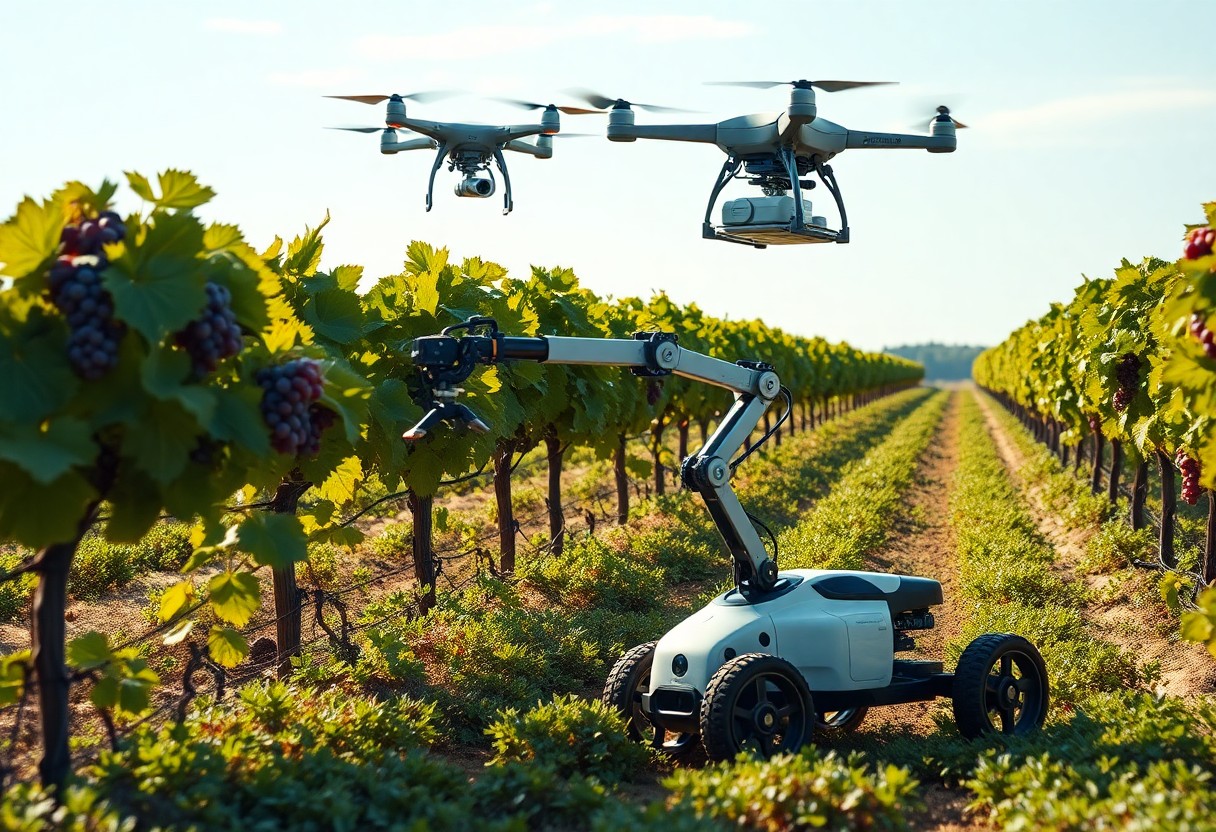Robots have revolutionized the way you explore and understand underwater environments. These advanced machines are designed for various applications, from conducting scientific research to aiding in recovery missions. By harnessing cutting-edge technology, underwater robots enable you to gather valuable data, locate submerged objects, and operate in extreme conditions that would be challenging for human divers. Discover how these remarkable tools are transforming marine exploration and salvage operations, enhancing our ability to respond to environmental challenges and uncover underwater mysteries.
Overview of Underwater Robots
Underwater robots have become indispensable tools for researchers and recovery professionals, enabling exploration of deep-sea environments and inaccessible areas. These advanced machines utilize sophisticated technology to gather data, conduct surveys, and support various underwater missions, from archaeological finds to environmental monitoring. Their adaptability and precision allow you to achieve objectives that were once considered unfeasible in aquatic settings.
Types of Underwater Robots
You will find an array of underwater robots tailored for specific tasks, ensuring effectiveness in various scenarios. Some prominent types include:
- Remotely Operated Vehicles (ROVs)
- Autonomous Underwater Vehicles (AUVs)
- Hybrid ROVs/AUVs
- Underwater drones
- Self-Contained Underwater Breathing Apparatus (SCUBA) robots
Assume that each type has unique strengths optimized for different underwater challenges.
| Type | Functionality |
|---|---|
| ROVs | Controlled via surface support, ideal for intricate tasks |
| AUVs | Operate autonomously for extended missions |
| Hybrid Systems | Combine ROV and AUV capabilities for flexibility |
| Underwater Drones | User-friendly and compact for recreational use |
| SCUBA Robots | Assist divers during deep-sea explorations |
Key Technologies
The efficiency of underwater robots stems from a blend of advanced technologies that enhance their operational capabilities. These technologies include sonar mapping for navigation, high-definition cameras for imaging, and various sensors for data collection, allowing you to gather crucial information on underwater conditions.
Sonar technology, for instance, enables detailed mapping of the seafloor, significantly improving mission planning and execution. High-definition cameras capture sharp images and videos, which are imperative for scientific documentation or recovery assessments. Other sensors, such as temperature and pressure gauges, provide vital environmental data. Innovations in propulsion and energy management further extend mission durations and operational ranges, equipping you with versatile tools to tackle a variety of underwater challenges. The integration of artificial intelligence is also revolutionizing the operation of these robots, facilitating enhanced decision-making and adaptability in dynamic environments.
Applications in Research
Underwater robots have dramatically transformed the landscape of research, providing capabilities to explore and collect data in environments previously deemed inaccessible. These advanced machines enable scientists to conduct long-term studies in marine ecosystems, unveil geological formations, and gather critical data for climate change research. Their ability to operate in extreme conditions enhances your understanding of ocean dynamics, biodiversity, and the impacts of human activity on marine habitats.
Marine Biology Studies
Underwater robots facilitate groundbreaking marine biology studies by capturing high-resolution images and gathering vital data on fish populations, coral reef health, and ecosystem interactions. Equipped with advanced sensors, they can monitor water quality parameters and track species movements, allowing you to analyze habitat changes over time and assess the effectiveness of conservation efforts.
Geological Surveys
Geological surveys conducted by underwater robots allow for thorough mapping of the ocean floor, uncovering previously hidden geological features. By employing sonar and imaging technologies, these robots collect data that aids your understanding of tectonic processes, sedimentation patterns, and potential mineral resources.
Through geological surveys, underwater robots can explore areas such as hydrothermal vents, subduction zones, and underwater volcanoes. These surveys provide insights into the earth’s crust dynamics and contribute to identifying natural resources like gas hydrates and polymetallic nodules. For instance, the use of Autonomous Underwater Vehicles (AUVs) equipped with multibeam sonar has successfully mapped vast areas of the seafloor, revealing intricate details about geological formations and sediment types that were previously unknown, enriching your geological knowledge and resource management strategies.
Applications in Recovery Operations
Underwater robots are increasingly pivotal in recovery operations, effectively tackling challenges in search and rescue, as well as wreckage recovery. The adaptable technology allows you to deploy sophisticated sensors and cameras in complex underwater environments, providing critical data swiftly. Programs like NASA JPL Developing Underwater Robots to Venture … highlight ongoing innovations shaping these operational techniques.
Search and Rescue Missions
Your involvement in search and rescue missions is enhanced by the use of underwater robots, which can access hard-to-reach areas after disasters like floods or tsunamis. Equipped with sonar and imaging technology, these robots locate missing individuals or critical evidence within seconds, promoting swifter recovery efforts.
Wreckage Recovery
In wreckage recovery operations, underwater robots play an necessary role in locating and retrieving sunken objects, such as vehicles and aircraft. Their precision navigation and high-resolution imaging capabilities provide you the tools to ensure successful recovery, minimizing the environmental impact and enhancing safety for divers.
Utilizing underwater robots for wreckage recovery offers significant advantages, particularly in assessing the condition of submerged objects before recovery. For instance, the use of remotely operated vehicles (ROVs) equipped with robotic arms allows you to manipulate and secure wreckage from sensitive ecosystems, all while gathering valuable data on structural integrity. These robots can examine into depths inaccessible to conventional divers, unveiling details that help in planning effective recovery operations. The shift towards robotics in this field continues to prove beneficial, significantly increasing the likelihood of successful recoveries and reducing risks associated with human divers in challenging conditions.
Challenges in Underwater Robotics
Underwater robots face several significant challenges that can impact their functionality and effectiveness. These include communication limitations, environmental factors, and technical constraints. Each of these challenges can hinder the performance of these robots in various research and recovery operations, necessitating innovative solutions to enhance their capabilities.
Communication Issues
Communicating with underwater robots is often hindered by the limitations of acoustic signals, which can suffer from attenuation and distortion in deep water. This makes real-time data transmission difficult, leading to delays in response and potential inefficiencies in operations. Additionally, the variability in underwater environments can cause disruptions in signal quality, further complicating communication.
Environmental Factors
The underwater environment presents multiple challenges, including varying temperatures, pressures, and currents that can affect robot performance. These factors can influence the reliability of sensors and actuators, posing risks for both navigation and data collection. Robots must be designed to withstand these conditions, ensuring their operability across diverse oceanic environments.
- Temperature fluctuations can impact battery life and sensor accuracy.
- Strong currents can affect maneuverability and stability.
- High pressure can damage sensitive electronic components.
- Any operational strategy must account for these environmental elements.
For instance, a study conducted on deep-sea exploration showed that underwater robots equipped with specialized pressure-resistant materials increased their operational depth by 30%. Adapting robots to cope with thermal gradients provides substantial benefits in data collection efficiency. Design modifications for buoyancy control enhance performance in turbulent waters, illustrating the importance of addressing environmental factors.
- Development of adaptive algorithms helps robots navigate complex habitats.
- Enhanced structural integrity improves survival in extreme conditions.
- Robust sensor systems are vital for accurate data measurement.
- Any strategies deployed must consider these varied environmental challenges.
Future Trends in Underwater Robotics
The future of underwater robotics promises to enhance capabilities and expand the possibilities for exploration and recovery efforts. Emerging technologies, improved materials, and refined software algorithms are poised to make these machines more efficient and versatile, addressing challenges previously deemed insurmountable. As needs for ocean conservation and resource management grow, advancements in your underwater robotic systems will play an integral role in shaping sustainable maritime practices.
Innovations on the Horizon
Anticipated breakthroughs in underwater robotics include the integration of artificial intelligence for enhanced decision-making and the use of advanced materials such as bio-inspired soft robotics. These innovations aim to improve energy efficiency, increase adaptability to various marine environments, and facilitate remote operations in extreme conditions, ultimately broadening your research and recovery capabilities.
Increasing Autonomy
Developments in autonomous navigation and operation will significantly elevate your underwater robotic systems. With advancements in machine learning and sensor technology, robots will increasingly operate independently, requiring less human oversight during lengthy missions, which allows you to focus on strategic planning rather than real-time control.
The trend towards increasing autonomy encompasses several key technologies such as enhanced obstacle detection systems, adaptive path planning, and real-time data processing. With the ability to analyze surroundings and adjust routes autonomously, these robots can survey larger areas and perform complex tasks without human intervention. This is particularly beneficial in deep-sea explorations or hazardous environments, where human presence is limited or risky. As you embrace these advancements, the potential for autonomous underwater vehicles to conduct extensive surveys, collect data, and even execute repairs will revolutionize marine research and recovery activities.

Case Studies
- ROV Jason II: In 2010, utilized in the Deepwater Horizon oil spill, successfully assessed the underwater environment and monitored dispersant application.
- NOAA’s Okeanos Explorer: Completed over 50 deep-sea explorations from 2015-2021, mapping and documenting new marine species and ecosystems.
- HICO: Conducted a recovery mission for historical shipwrecks in the Great Lakes, providing high-resolution imaging that revealed previously unseen artifacts.
- Bluefin Robotics: In 2021, launched an autonomous underwater vehicle (AUV) for a biodiversity study, collecting over 12,000 water samples in less than a month.
Successful Research Missions
Your understanding of underwater robotics expands through numerous successful research missions that have showcased advanced technologies. For instance, the AUV Sentry conducted deep-sea mapping in the Gulf of Mexico, covering over 1,000 square miles and identifying 800 new geological features, advancing your knowledge of marine topography significantly.
Notable Recovery Operations
Several notable recovery operations illustrate the efficacy of underwater robots in retrieving valuable objects and data. For example, the recovery of the Air France Flight 447 wreckage in the South Atlantic involved remotely operated vehicles (ROVs) that helped locate crucial flight recorders, enabling investigators to analyze the causes of the crash and improve aviation safety standards.
The Air France Flight 447 operation serves as a pivotal example of underwater robotics in action. ROVs meticulously searched a 3,000 square kilometer area, overcoming challenging depths of 3,900 meters. They successfully located the wreckage within 45 days, retrieving both black boxes, which provided imperative data for improving aviation protocols. Such operations emphasize the invaluable role these technologies play in enhancing safety and knowledge in maritime activities.
Final Words
Drawing together the advancements in underwater robotics enhances your ability to conduct research and execute recovery operations in challenging marine environments. These innovative technologies empower you to explore uncharted territories, gather critical data, and recover valuable resources, all while minimizing human risk. As you continue to leverage these robots, you expand your understanding of ocean ecosystems and improve response capabilities for underwater incidents. Your engagement with these tools will undoubtedly drive further advancements in marine technology and research.







